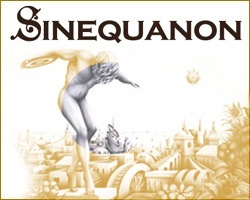Words by Luisa Chiumenti
When Charles Dickens entered Milan on a foggy day, coming to the most famous and eternal icon of the city, he noted, among other things….”it was so foggy that given what one could see of the spire of the famous Cathedral, it could easily have been in Bombay.” In fact it was not easy, in that muffled atmosphere to recognize the silhouette of “that great machine of the Cathedral “just on one plain, as it if were not standing in the centre of a city but in the middle of a desert.” It a strange remark, dating to some centuries later, is that of Frenchman André Suarès, who called Milano “a city shaped like a wheel…a round anthill, more a Chinese than a European city…..the station is a splendid glass tunnel……The city centre is one big station. The turmoil, the dry movement of the tracks are everywhere in the streets: and that marble cathedral is a marble station.” And then there was Henry James, who visited the cathedral in 1877, referring to it as “the most dense and interesting page” of the book that tells the story of Milan. But many international travellers have given great descriptions of the cathedral, falling under the spell of its striking “triangular-cut” facade culminating with the endless spires. And the statue of the Madonnina, the patron of the inhabitants of MIlan, still attracts attention and continues to be the subject of studies and exhibitions that tell the story of how it came to be, of how the person who showed the original wooden bust from which his golden statue was forged and the iron structure on which it stood, which was then replaced by another, stronger steel base. Many parts of the cathedral are urgently in need of renovation and this is why the Fabbrica has launched a drive to find funding, through various artistic and cultural initiatives which are part of the “VivilDuomo” project in the cathedral and on the terraces, the aim being to sensitize public awareness and get people involved once again in the reality of this monument which the world sees as the symbol of Milan. One idea that has attracted a lot of attention is the idea of organizing concerts high up among the spires (there are 134 of them and they are all numbered anticlockwise) to fund the restoration of some parts of the cathedral and the spired themselves. But many events link Milan to history from the anniversary of the Edict of Constantine (2013) to the 2015 Expo. And the city is getting ready for the Expo, starting with some refined restoration on the main railway station, the Stazione Centrale, the powerful facade witness to so many historical arrivals to the city, and which has been given a real facelift with regard to passenger services and facilities. In the framework of the new “Grandi Stazioni” project the new concept, while respecting the historical and architectonic identity of the station, has given priority to an innovative model of traffic management. The internal passageways have been reorganized as have the access areas, repositioning e reconfiguring a plan based on the use of cutting-edge technology in relation to the expectations of current users, with an aim to then boosting the levels of quality, comfort and security. And then there is literary Milan, which as been alive for many years, for example around the Bagutta, the restaurant which has long been a haunt for artists, writers and journalists and is mentioned in many texts and dictionaries like the Alfredo Panzini (Dizionario Moderno), which mentions it as having been the seat of the Prize founded in 1927 by journalists and artists to help the birth of “youthful geniuses.”
Launched in Italy the prize is awarded every year by a jury to the work of a contemporary Italian writer, and is considered an “aristocratic prize,” awarded during the winter months when Milan has snow and fog and along the little street parallel to Via Montenapoleone ghosts like those of Panzini or Pirandello flit past….” But the Milanese also frequent the typical bars and club of the water city along the historical Naviglio Grande and Naviglio Pavese, which bear witness to a Milan that, in the past, developed on a network of waterways which made it possible to navigate between the Ticino, the Adda and the Po and then also the Adriatic. And today the old artisan shops and ancient washhouses, with their wooden roofs, are now part of the Naviglio Grande Association, which protects historical and environmental premises, and attract millions of visitors and tourists. And then there is that other historical icon of MiIan, the La Scala Opera House which the architect Botta rebuilt between 2002 and 2004 leaving the façade as it was, and then there is the Milan that looks towards the city of the future and the great post-2015 metropolis. And, of course to Cesar Pelli’s Garibaldi Tower which, with its 230 metres, soars higher than I. M. Pei’s building which is the headquarters of the Region, and stands at a mere 161.3 metres but will soon see the CityLife Tower, designed by the American architect Libeskind, soar to 150 metres, totally transforming the urban silhouette of old Milan.



